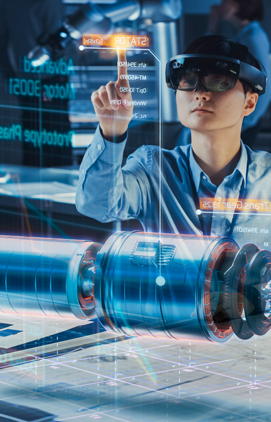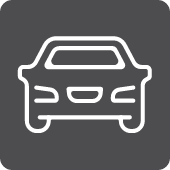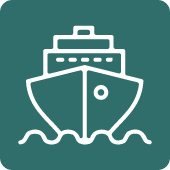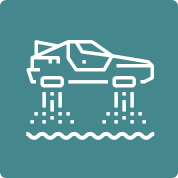
The Strategic Transport Research and Innovation Agenda (STRIA) roadmap on Vehicle design and manufacturing (VDM) aims to develop successful marketable transport vehicles with shorter development times. There are five main challenges related to VDM:
- growing competition from emerging economies;
- growing complexity and cost pressure;
- increasing number of environmental and safety regulations;
- more companies competing;
- behavioural change in users and industry.
This roadmap also establishes three main cross-modal objectives, which are described as follows:
- Advancements on design tools and processes. Integrated, multidisciplinary, scientific based and validated design processes and tools, that make use of high performance computing resources, will allow efficient design, optimisation and manufacturing of transport vehicles. New tools and processes will expand the design space offering more environmentally friendly options, substantially decrease the development lead time and maintain or even increase safety and security.
- Advancements on new vehicle concepts and architectures. Evolutionary and disruptive vehicle concepts that will adopt new technologies, as soon as they are developed, and fully integrate them in the design of the next generation vehicles, providing significant improvements in emissions in all transport sectors. Energy efficiency gains are expected to come not only from components and systems but also from their integration.
- Circular economy, modular vehicle architecture and remanufacturing, greening industry. Greening the primary production and supply chain operations could be achieved by optimizing processes, with digitalization along the value chain enabling modular vehicle architecture and a closed loop approach. There is need for research on innovative end-of-life recovery options, which allows for a shift from traditional recycling to eco-design and eco-manufacturing.

ROAD. Development time of new car models average 25 months but is expected to fall to below 20 months over the next decade.
Suppliers need to be involved at the early stages of vehicle design process to eliminate inefficiencies along the whole value chain and achieve economies of scale. Advanced design tools and Product Lifecycle Management (PLM) software can play a key role in decreasing development and integration time while modularity facilitates progress that integrates physical and digital resources.
In the automotive sector the main trends of VDM are:
- decrease in development time;
- development of advanced design tools;
- modular solutions;
- more integration in the supply chain;
- regulation driven new technologies;
- growing complexities of customised vehicles;
- research, development and innovations.

AVIATION. Greater use of digital and data based business models, advanced conventional and disruptive manufacturing technologies reduce entry costs to the aviation sector.
The digital, zero waste, and energy neutral factories will use data driven manufacturing systems to ensure high productivity, permit rapid new technology implementation, and enable product and rate flexibility through supply chain integration.
New design and manufacturing integrative approaches are necessary. The market demands ever shorter cycles for technology integration and aggressive pricing.
Main aviation trends are:
- fierce international competition;
- new business models;
- energy and environmental performance;
- shorter cycles for technology integration;
- research and innovation support and investment proportional to the goals and global leadership.

WATERBORNE. The majority of modern vessels rely on some form of diesel engine for their prime propulsive power. However, the advantage of a hybrid power plant on lower activity levels could help reduce emissions and energy consumption. Another alternative is to use batteries as a temporary power source, resulting in zero emission cruising. A combination of diesel engine, generators and batteries allows the system to supply the required power more efficiently than a conventional diesel system. A shipyard’s competitiveness is dependent on the level of production management together with Design for Manufacturing and Design for Assembly capabilities.
The main trends in shipbuilding are:
- integration between digital design and digital manufacturing;
- manufacturing and production planning;
- new powertrain architectures and;
- temporary power source.

Enable shorter vehicle design, development and manufacturing cycles by:
- supporting research on design tools and processes, including disruptive technologies;
- facilitating technology convergence;
- developing strategic testing facilities;
- developing further and exploit better high performance computing (HPC) facilities;
- automating design and manufacturing;
- developing new multifunctional materials;
- developing an agile market for facilitating implementation of disruptive technologies.

Enable new vehicle concepts, business models and modular vehicle architectures by:
- support research on new vehicle concepts and architectures.
- support research on electric/hybrid vehicles, systems, system integration and enabling technologies;
- support power systems validation facility;
- exploit synergies with the power-electronics industry and explore disruptive technologies for heat dissipation;
- exploit synergies with space & defence.

Reduce the environmental impact and allow for higher recycling and/or re-manufacturing by:
- support research on greening the primary production and supply chain operations by innovative tools for optimising processes, with digitalisation along the value chain (including security of data exchange);
- support research on innovative End-of-Life recovery options (shift from traditional recycling to more energy efficient re-manufacturing and new second life applications;
- support research on new lightweight and easily recyclable materials.
Data at-a-glance
TRIMIS Data at-a-glance presents the main transport research and innovation indicators based on TRIMIS data. Find out more about the geographical distribution of European Union transport research and innovation funding, discover the organisations involved in transport research activities and the evolution of funding. Discover the TRIMIS overview for overall data and the seven STRIA Roadmaps.
Further details are available in the full TRIMIS Dashboard.

